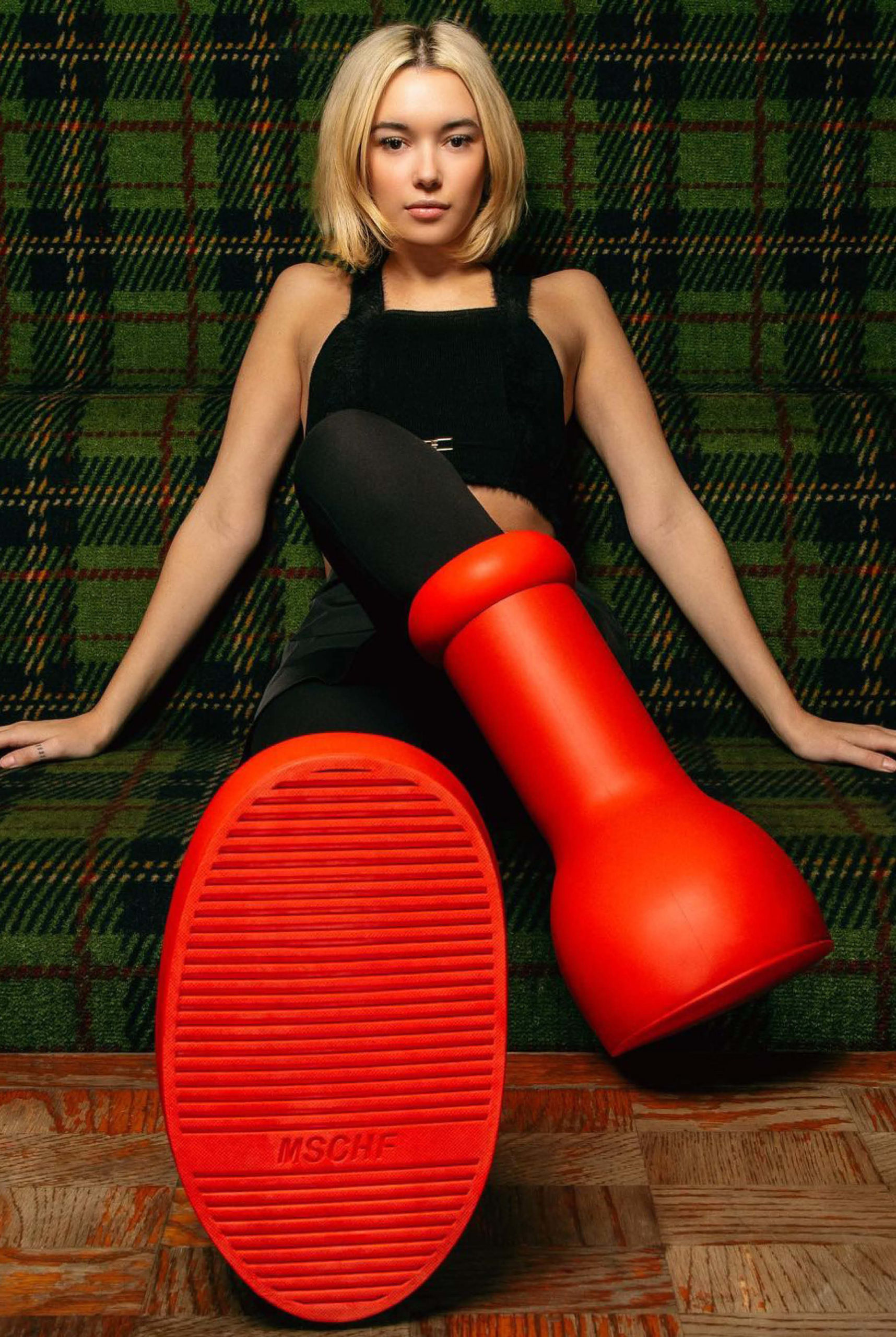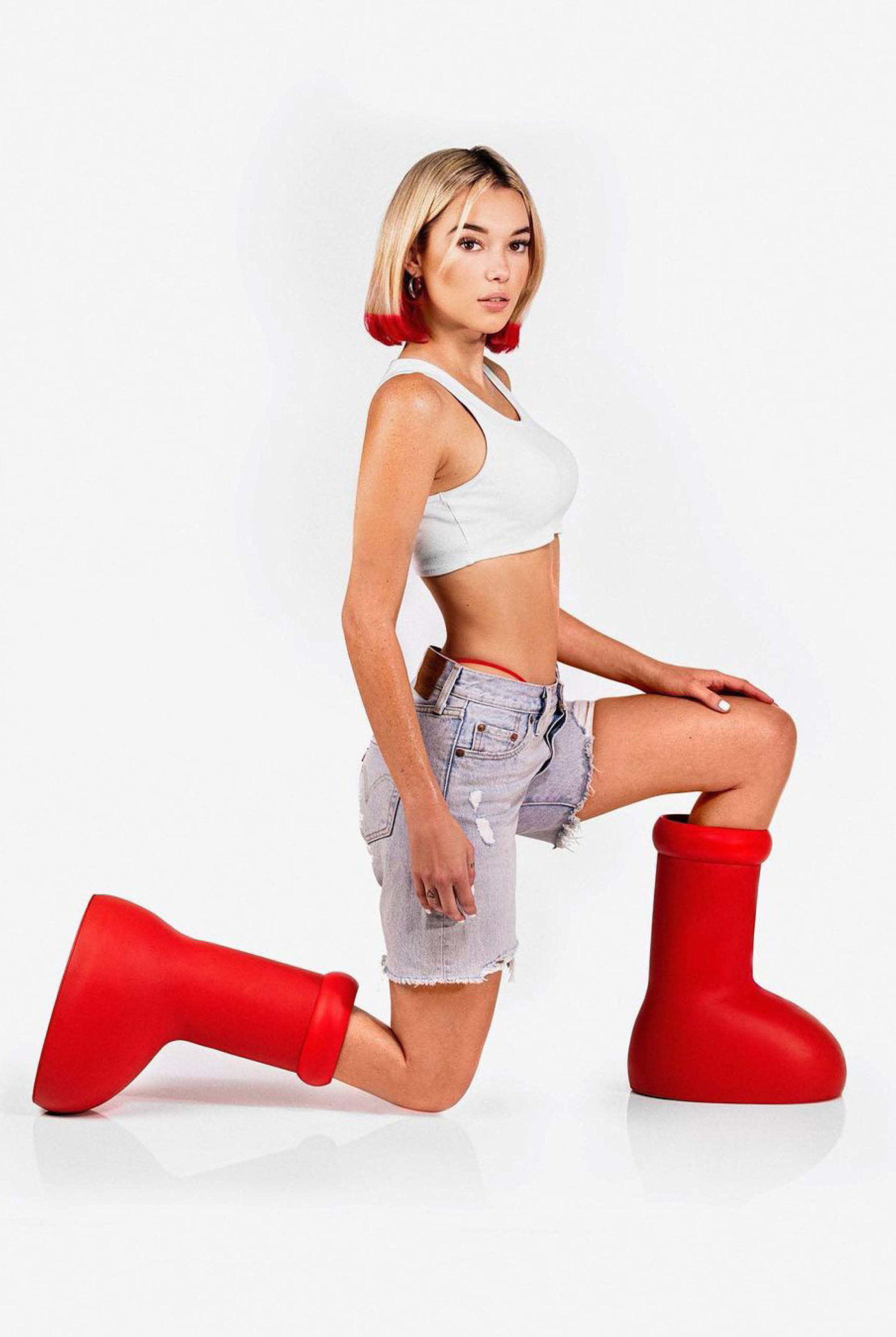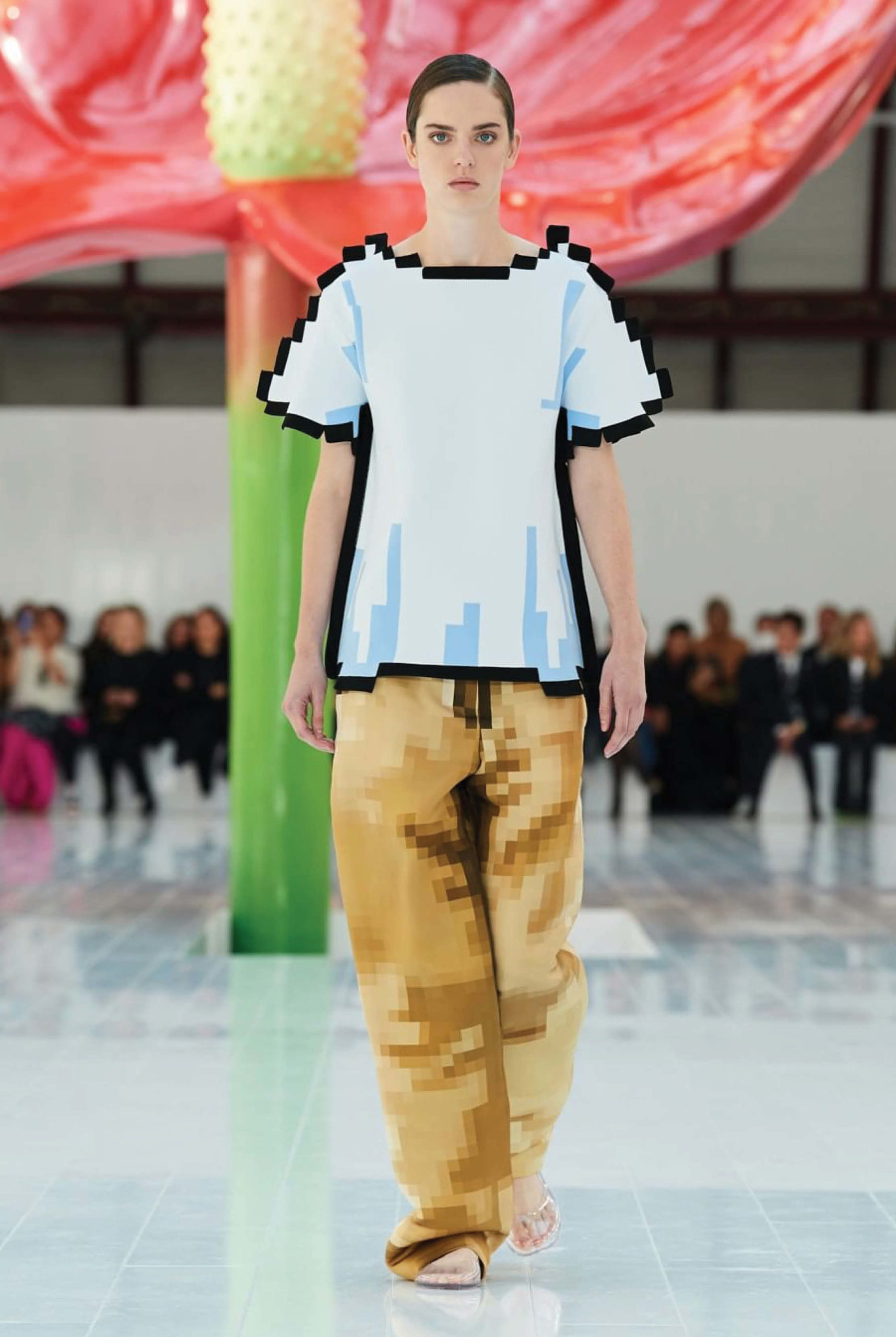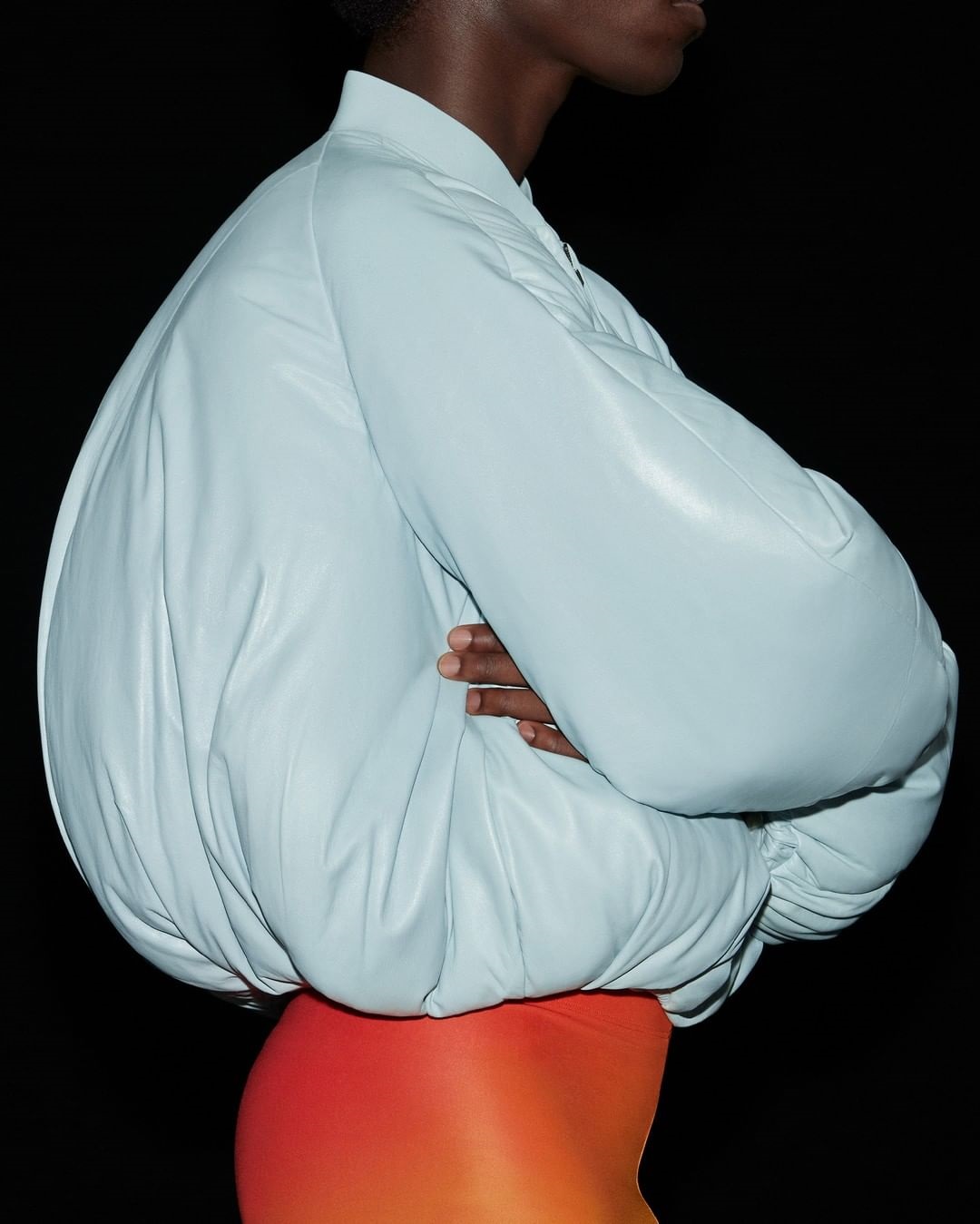It’s big. It’s red. It’s boots. And surprisingly, it’s real. Here, we investigate the popularity behind the controversial footwear and what it implies to the future fashion industry
The big red boots of MSCHF are everywhere. In a span of a week, the reality-bending footwear carved its place in the fashion culture pantheon with huge recognition on social media, and admiration from artists like Coi Leray, Lil Wayne, Diplo, and Seth Rogen. But who can blame them? Its playful extremity can’t be left unnoticed. On the plus side, the design renders an uncanny resemblance to Astro-Boy’s shoes. It’s nostalgic. It’s cartoonish. It’s unconventional. And it’s everything that the industry is obsessed with.
RELATED: New York Fashion Week is an Ode to Oddity
“Big red boots are really not shaped like feet, but they are extremely shaped like boots,” read the Brooklyn-based brand’s product description. The chunky footwear is composed of a TPU rubber shell material with EVA sole units and is completed with a subtle stamp of an MSCHF logo. In addition, its dramatic proportion, smooth texture, and vibrant red colorway are the standout features that made it look like a sleek digital render.

Meanwhile, in fashiontok, some fans who had early access to a piece are lost on how to properly style the boots while others are left to figure out how to take it off. Many fashion enthusiasts also opened a conversation to explain the current rise of the viral footwear. In fact, threads like #bigredboots garnered 25.1 million views while #mschf is back on the map with 1.5 billion views. It’s undeniable that the Big Red Boot took over the Internet by storm prior to its official release. And from here, we can’t help but wonder why? We investigate.
The analysis of its appeal

Is it camp? Is it bad? Or perhaps it’s so camp that it’s good? Who knows? There is so much fascination with the controversial pair of boots. However, it’s worth crediting that MSCHF’s footwear entry took unconventionality to new heights. In contrast to the mainstream ideals, it was not made to suit a preference, but rather, it challenges fans to contemplate and be creative. Consider it as an unsolvable fashion puzzle. Only this time, the objective of the game is for you to figure out how it can work for you without the help of any visual inspiration.

On the other side of the spectrum, these boots say much more about the future of fashion than we think. Its uncanny design came from a baseline of combined virtual and real-life aesthetics that are heavily influenced by the digital age. Moreover, it represents the industry’s significant shift to hyperreality.
Hyperreality in fashion
“Hyperreality captures the inability to distinguish reality from its representation,” fashion trend forecaster Agus Panzoni explained in her video. “It’s especially prevalent during the AI revolution.” MSCHF aside, the concept increasingly became popular with Jonathan Anderson’s interpretation of the Loewe Spring/Summer showcase. Models donned a saga of Minecraft-inspired pixelated pieces, while the season’s real-life Minnie Mouse stilettos became the main star of the footwear category.

Apart from that, the industry has also explored other interpretations of hyperreality. “It is aligned with growing trends such as the ongoing puffification of fashion, which I called cloud wear,” Agus Panzoni pointed out. Take Prada, for example. The luxury fashion house’s eponymous soft bag centers on a plush exterior from Nappa leather and is completed with puffed two top handles. It’s a given that there is more than one way to integrate the concept into a design. To say the least, it sparks a movement to be more creative without the constraint of reality.
Our point of view

“If technology has gotten really good at representing reality rather than implicating it like a cartoon, why can’t we bring implications of reality to life?” fashion trend forecaster Agus Panzoni expressed this in her video. It’s a given that many conversations are focused on how the fashion industry can bring a better and more personalized experience inside the digital world. However, Loewe and MSCHF made an interesting twist by doing exactly what Agus Panzoni had thought of. Is peculiarity the next big thing? Maybe. But it’s undeniable that it makes a great strategy for brands who want to punctuate a strong identity in this era.
At the other end of the spectrum, it will be interesting to see how creatives can utilize this significant shift on making a more positive impact on the environment. The key takeaway is to exercise creativity with a purpose. And as the fashion industry continues to explore expanded imagination and hyperreality, it’s certain that there is a new space to play with otherworldly concepts to create decade-defining pieces. Maybe we are living in the future. Or maybe not. But one thing is for sure, it is an exciting chapter in the fashion world.










